The resort town of Siem Reap may not be for everybody. Luxury travelers are often shocked to discover that the province lacks Michelin-restaurants and multi-floored shopping centers. They instead have a rich cultural history, beautiful boutique hotels, a lively night life, and an undiscovered (but truly special) food culture. As a millennial traveler looking for an Eat Pray Love moment near home for the weekend, Cambodia seemed like an easy option. It is only a quick two and half hour plane ride away from Manila, and having been there before, there was no fear of the unknown. In fact, I loved it so much the first time around, that round two was just to make sure that my prior experience wasn’t a fluke. It wasn’t.
For those who don’t mind riding tuk tuks instead of limos, eating street food instead of Michelin-star fare, and having long, sleepy afternoons under a vine-covered swimming pool, then Cambodia may be for you. Siem Reap’s charms capture the very essence of what Asia is about, and that alone is a five-star experience worth having.
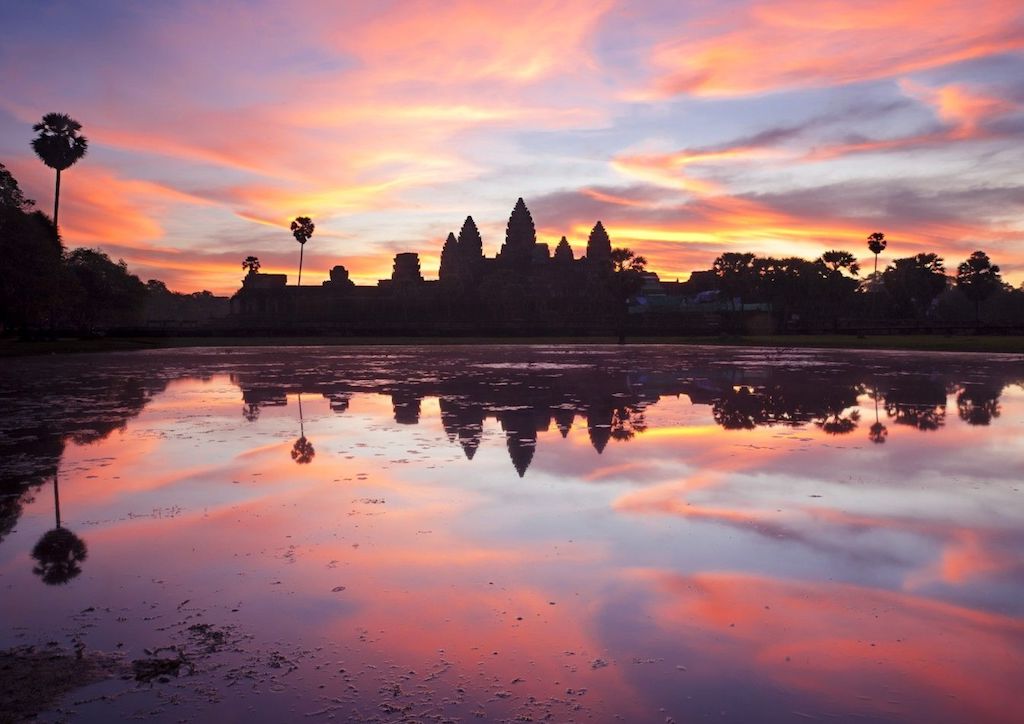
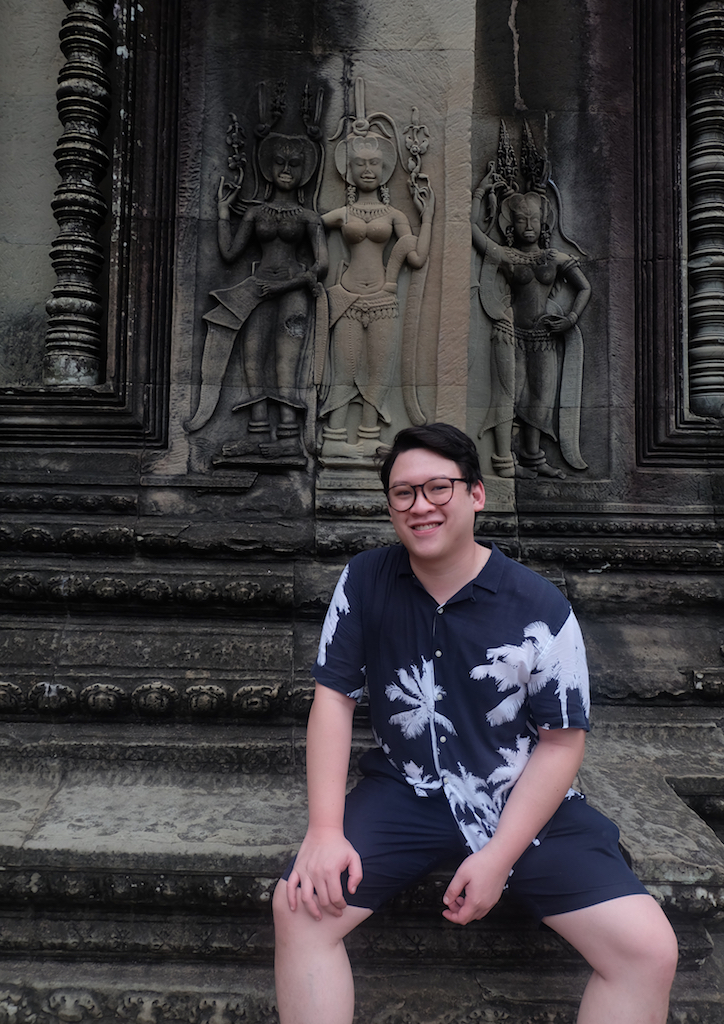
Visit the Ruins of Angkor Wat
As touristy as it sounds, travelling to Siem Reap is never complete without checking the cultural and historical ruins of Angkor Wat. The temple complex is the largest religious site in the world, spanning on over 402 acres of land. Although packed with tourist on a daily basis (Siem Reap is on peak season all year round), Angkor Wat is still a sight to behold. There is a great mystery that surrounds the origin of the temples. Many believe it was commissioned by Idra for his son Precha Ket Mealea to use. Others believe that it was built in one night by a divine being.
The most famous story is that it was built by Khmer King Suryavarman II during the 12th century in honor of Vishnu, a principal deity of the Hindu faith. By the end of the century, Angkor Wat slowly turned into a Buddhist temple of worship, which it remains to be till this day. Although no true origin story has been found (the original name of the temple is yet to be discovered as well), Angkor Wat has become so popular around the world that the government has decided to make it their national symbol, going as far as putting in on their flag. Its impressive architecture is done in the classical Khmer style of stacking heavy stone. This was only done for religious buildings between the 8th century AD to the first half of the 15th century.
It is best to visit Angkor Wat during sunrise. Set your alarm at 4 in the morning and make sure you’re out the door by 4:30 AM. Your tuk tuk (a local mode of transportation, similar to our tricycle) will take you the ticketing station. Afterwards, a twenty-minute drive towards the temple is impressive. Take in the morning dew and air before reaching Angkor Wat. Seeing it a sunrise is truly memorable, especially if you find a free space around the iconic, reflecting lily pond.
RELATED READS: Be Suspended 192-feet Above Ground in Auckland’s Skywalk Activity and Live to Tell the Tale
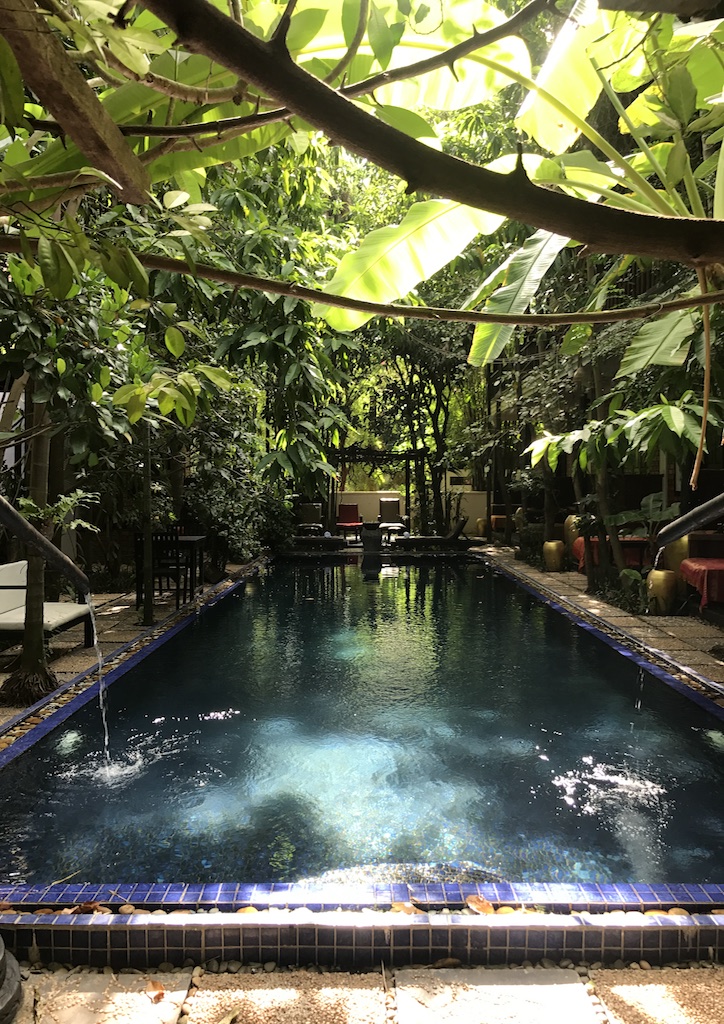
Stay in a Boutique Hotel
The Raffles Grand d’Angkor at Angkor Wat is a very worthy hotel for a luxury experience in the provincial city. However, Siem Reap offers countless of boutique hotels looking to be discovered. For instance, the Le Petit Villa (which I’ve stayed in twice) provides 4-star amenities for a very good price. In addition to that, you get that true feeling of being in an Asian city. Upon arriving, you are quickly met at the door with kindness by the hotel staff. The lobby is unique—it is a single hut floating on a pond of water. Registration and check-in is quick. You are then escorted through the “petit jungle”, the hotel’s open-area and common space which is adorned with traditional statues, vines, and flora. There are even animals walking around (bunnies are hopping around and large birds rest at the corners of the pool)!
You will be surprised with the size and charm of the suites, which features a king-size bed, a flat screen television, a jungle-like bathroom with a bathtub, and even your own veranda facing the “jungle”. It is suggested to book a room on the bottom floor (it is a boutique hotel with only two floors), so that you can quickly exit your suite and jump straight into the large swimming pool. Le Petit Villa also offers great services and amenities. Their bartender is prepared to make you a cocktail by the pool, and the receptionist is more than willing to book your massages, cars, tuk tuks, meals, and even cooking classes. Staying in a boutique hotel is a nice change from large chains. You can get lost in the quiet culture that Cambodia is best known for.
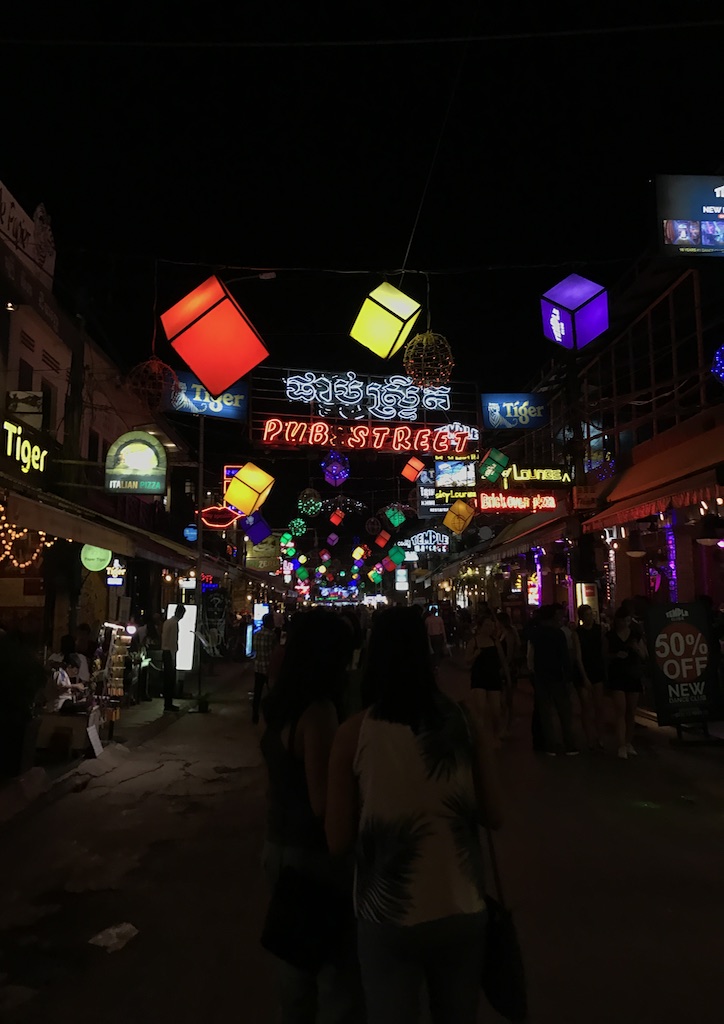
Bar Hop at the Famous Pub Street
Pub Street is the liveliest area of Siem Reap, no matter day or night. Countless tourists roam the area, rubbing elbows with the locals, while looking for the best shopping finds and street food. Close by is the famous Night Market, where you can buy all sorts of things—from traditional masks to elephant-print pants. However, the ultimate thing to do at Pub Street is to go bar hopping. Many of the establishments are owned by foreigners who have settled in the country, making each place unique in their own way. Happy Hour promos are particularly interesting, with bizarre and unique drinks available for your discovery. One Pub Street staple not to be missed is The Red Piano. Located at the end of the area’s entrance road, the place became famous after it was frequented by Angelina Jolie during the filming of the first Tomb Raider movie. They named a cocktail after the film, which they claim was the go-to order of the Oscar-winning actress. It is a sweet concoction that includes Cointreau, Lime Juice and Tonic Water…and it’s actually pretty good!
RELATED READS: Five Days in the Hermit Kingdom: Bhutan Through the Eyes of a Millennial Traveler
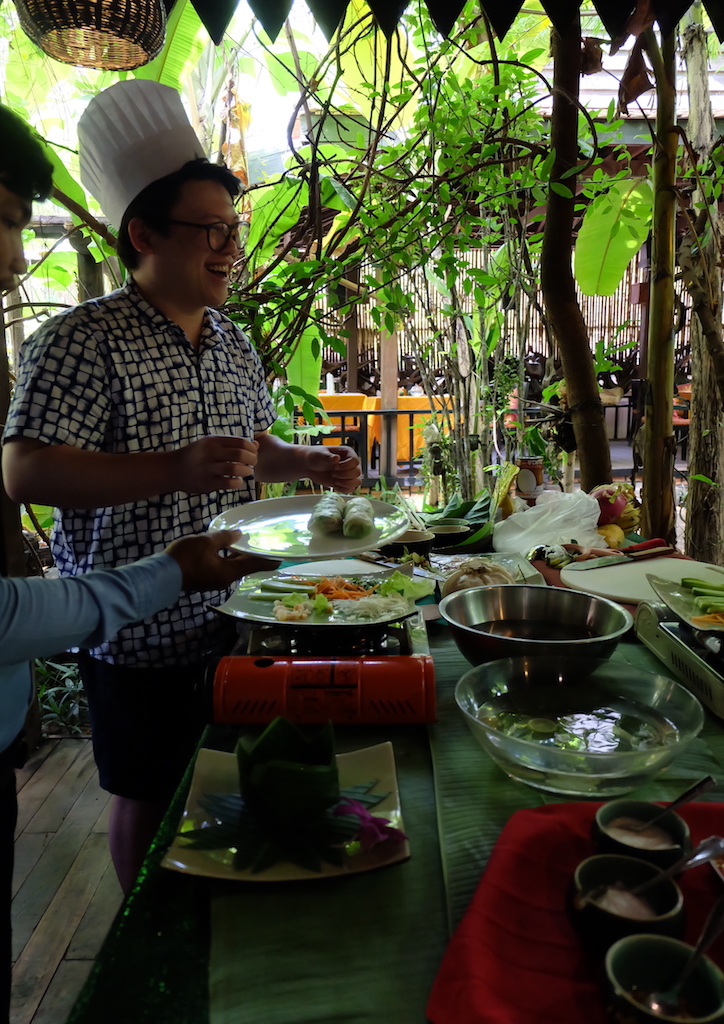
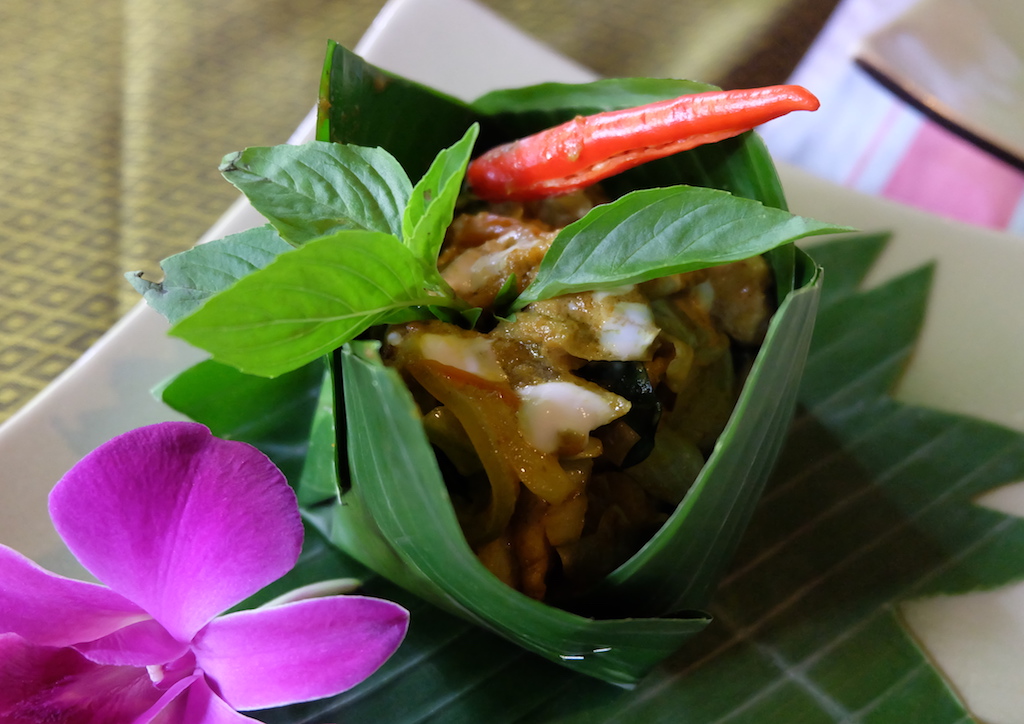
Take a Cooking Class
Several hotels and food establishments offer cooking classes for as low as $25 dollars in Siem Reap. I booked a class at the Le Petit Villa, the boutique hotel I was staying in, and was told I would learn how to make three traditional Khmer meals. Upon arriving the dining hall, I was surprised to have found a makeshift kitchen built just for a me and my teacher, the hotel’s chef. Mounds of ingredients were laid out on the cooking station, and the smell of Asian spices wafted through the air.
The first thing I learned how to make was the traditional spring rolls. Although I consider myself somewhat of an amateur cook, I always find trouble rolling rice paper. However, the hands-on chef and other curious onlookers from the hotel staff, walked me through the process slowly. I can now roll spring rolls to “close-ish” perfection! Although similar to the Vietnamese way of doing it, the Cambodians add a few extra ingredients. They also make a very unique sweet and spicy sauce to complement it. It includes several ingredients like fish sauce, sugar, and chili!
For the main course, we made Fish Amok, a traditional Khmer dish that uses catfish and has a very curry-like texture. The amok sauce is an explosion of flavor, infusing together blended herbs, spices and vegetables like lemon grass, garlic, shallots, onions, kaffir lime leaves, turmeric, and brown sugar. After cooking the fish in the sauce, it is then plated in a banana leaf bowl and finished off with a drizzle of coconut cream. It was a pleasure learning to make it, but an even bigger pleasure to eat it! Lastly, I tried my hand in creating a dessert they called Banana Pudding. Very similar to the Filipino ginataan, it only differs with the exclusion of some ingredients (no bilo bilo and langka) and the inclusion of Green Bean.
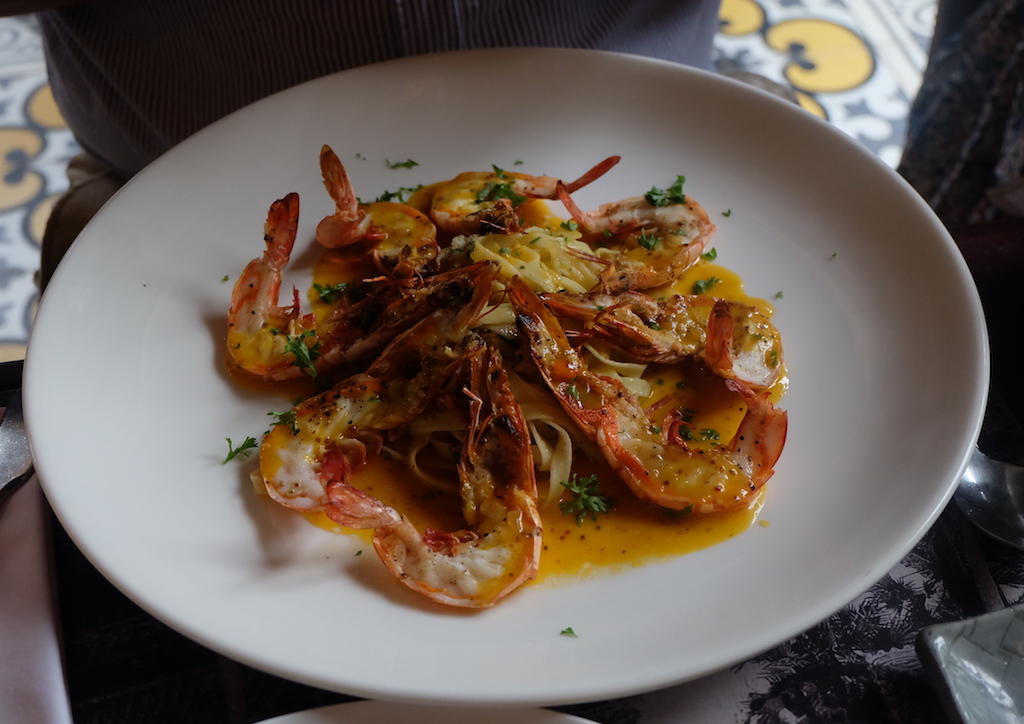
Discover the City’s Lost (But Truly Awesome) Food Culture
The food culture in Cambodia is truly special, that it is quite unfortunate that many don’t talk about it. It is a city worth going to simply for a weekend-long food trip. Fish Amok (as discussed above) is their most famous dish. It is silky and delicious, and best served with a serving of Cambodian seafood fried rice. Many street side restaurants and Hole-in-the-Walls also offer very good Asian fare. Simply walk the streets and notice establishments filled with diners. I assure you, you will not be disappointed. There is a lot of grilled fare worth trying. The Bai Sach Chrouk is grilled pork marinated in coconut milk. Ang Dtray-Meuk is simply grilled squid, but the Cambodian people have the art of cooking it down to a tee. If you’re feeling adventurous, try eating bugs! You read that right, bugs are a delicacy in Cambodia. Enjoy fresh tapas in the form of deep fried crickets, scorpions, ants, bees, and silkworm at the popular Bugs Café.
If you’ve finally satisfied your Asian fare craving, French cuisine is also very good in Cambodia (they were a French protectorate during the 1800s). A personal favorite is Le Malraux, which is tucked in an away in a chic, little alleyway in the city proper. I often joke with friends that I often come back to Siem Reap just to eat at this French bistro. Although they stopped serving my favorite (duck breast served with creamy potato stacks and four different mushrooms), their extensive menu is worth discovering. During my most recent visit, we ordered a shrimp pasta, steak tartare, and jasmine fried rice with shrimp, amongst others. We were not disappointed. In fact, many restaurants in Siem Reap are well-worth trying.
RELATED READS: Check This Out: This Hotel in the Costa Rican Jungle Was Built Inside a Vintage Airplane





